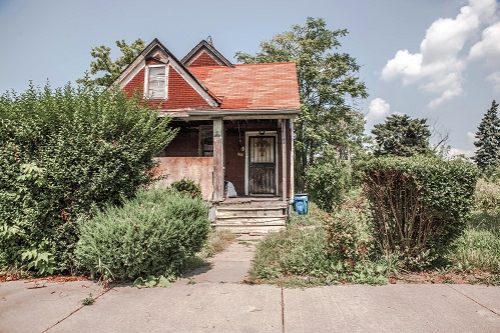What is HO-5 home insurance?
HO-5 homeowners policies are comprehensive policies with more coverage than an average home policy. The biggest difference is in personal property coverage.
“An HO-5 policy is referred to as an open peril policy,” says Marlen Brito of World Insurance Associates LLC in Worcester, MA. “This means that the policy will cover any loss not specifically excluded in the policy terms. This provides broader coverage than your standard HO-3 policy.”
While an HO-3 does offer open perils coverage for the home, it uses named perils for your personal property and limits the payout to actual cash value unless you choose an extended replacement cost endorsement.
An HO-5 policy covers losses to the structure of your home, property and your belongings from almost everything except a small set of circumstances, which are generally excluded from all types of homeowners policies anyway.
HO-5 policies also have higher coverage limits on specific types of personal property, like jewelry and other high-value items.
What does an HO-5 homeowners policy cover?
HO-5 homeowners policies generally include these coverage components:
Dwelling. The dwelling coverage pays for your home to be rebuilt if it sustains damage from something like a fire or storm. It is calculated as the replacement cost of your home,
Other structures. Other structures covers detached structures on your property such as sheds, fences and guest houses.
Personal property. The personal property coverage portion of your policy covers damages to your belongings including appliances, furniture and jewelry.
Additional living expenses. ALE, or loss of use, pays for a place to stay and other extra expenses while your home is being repaired.
Personal liability. Personal liability coverage protects you if someone is injured on your property, dog bites, or if you damage someone else’s property or cause them bodily harm.
Medical payments. Medical payments covers medical bills for people injured on your property, regardless of fault.
While these sections are the same as a standard home policy, an HO-5 expands some coverage sections. Specifically, HO-5 policies cover your personal property on an open or all perils basis and include replacement cost coverage. Limits of coverage are also higher.
HO-5 exclusions
Similar to other homeowners policies, an HO-5 policy has exclusions like mold, pest infestations, sewer backups, floods and earthquakes.
Homeowners insurance never covers floods and earthquakes- you must purchase separate coverage.
Homeowners insurance also usually only covers accidental, sudden damage to a home caused by a fire, storm, vandalism or other perils outside your control. Normal wear and tear or issues caused by neglect aren't covered. Sometimes, a pest or mold problem might be covered if it was the direct result of damage from a covered peril.
Who needs HO-5 coverage?
You may want to consider HO-5 coverage if you have expensive belongings or a large, expensive home. An HO-5 policy covers your belongings and your home’s structure for the replacement cost of these items. This differs from a standard policy which generally pays out only the cash value of personal property.
HO-5 policies also shift the burden of proof on the insurance company and away from you. Claims are generally easier than with a standard policy because instead of you having to prove the damage is covered, the insurance company would have to prove it’s not.
The other coverage sections usually have higher limits as well, and in conjunction with the open perils language, you will worry less knowing that every aspect of your home and property is covered. This is especially suitable for expensive homes or people who aren’t comfortable with a lot of risk and are willing to pay more to reduce that risk.
How much does an HO-5 policy cost?
HO-5 policies are a little more expensive than standard homeowners policies. According to the NAIC (National Association of Insurance Commissioners), here are average premiums in a handful of states:
The average cost of an HO-3 home insurance policy with $300,000 in dwelling and liability coverage and a $1,000 deductible is $2,777.
Your rate for an HO-5 policy with this same coverage will likely be higher than that average, but average home insurance rates differ greatly between locations and based on factors about your home, such as its size and construction type.
What is the difference between an HO-3 and HO-5 homeowners policy?
One of the major differences between a standard HO-3 homeowners policy and an HO-5 policy is the open perils language. This is especially important when it comes to your personal property.
AN HO-5 policy pays more for damages to your belongings than a standard policy. HO-5 policies typically pay for the replacement cost of an item rather than the depreciated cash value.
For instance, if you paid $5,000 for your TV and it was stolen 3 years later, an HO-3 policy will pay you the replacement cost minus three years of depreciation. An HO-5 policy will pay enough to replace that TV with a brand-new similar model. This is the difference between replacement value and cash value. HO-5 pays you the replacement value of not only your home’s structure but also its contents.
HO-5 policies also generally have higher coverage limits in many areas, including special limits on personal property like jewelry, art and electronics.
Is HO-5 policy coverage worth it?
Most people are okay with an HO-3 policy; there’s a reason it’s the most common policy type. However, If you have a lot of valuable property or simply want the best possible coverage, an HO-5 policy might be worth it.
You can also get the coverage you need by adding endorsements or riders to your existing homeowners policy; for example, replacement cost on personal property is an affordable endorsement. But, in some cases, an HO-5 policy is the better option.
Discuss your home insurance options with your agent or insurance company representative to make sure you’re buying the coverage that makes sense for you.




